How many species of wolves are there in North America?
Though wolf taxonomy is a subject of much debate within the scientific community, the current consensus is that there are two distinct species of wolf residing in North America:
Canis lupus - Gray Wolf

Canis lupus occidentalis - Northwestern Wolf
The Northwestern wolf is found in Alaska, the Northern Rocky Mountains of the United States, and Canada. This subspecies is also commonly called the Mackenzie Valley wolf, the Alaskan wolf, and the Rocky Mountain wolf.
Image Credit: "Walking Wolf" by Ellie Attebery is licensed under CC BY 2.0

Canis lupus arctos - Arctic Wolf
Arctic wolves are found in most of the Canadian Arctic Islands, such as Ellesmere Island. Since the predominant color phase of this subspecies is a creamy white, which camouflages it in snowy surroundings, it is often called the white wolf.
Image Credit: "Morning Nap Time" by Property#1 is licensed under CC BY-NC-ND 2.0
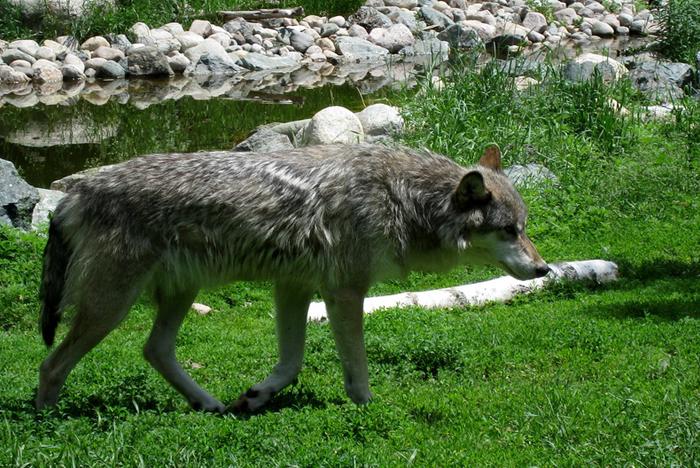
Canis lupus nubilus - Great Plains Wolf
Also known as the "buffalo wolf", this subspecies once occupied most of the Western United States, southeastern Alaska, and central and northeastern Canada. It had the largest range of any subspecies in North America. While it was thought to be extinct by 1926, studies indicate that the wolves in Minnesota, Wisconsin, and upper Michigan are descendants of this subspecies.
Image Credit: "Grizzer" by Pockafwye is licensed under CC BY-NC-ND 2.0
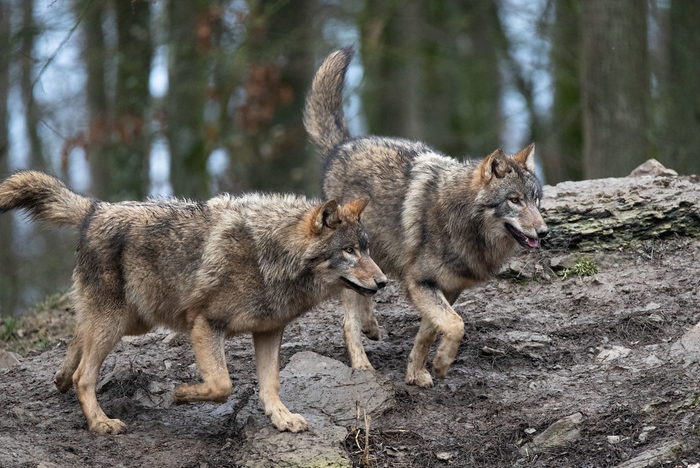
Canis lupus lycaon - Eastern Wolf
Also referred to as the Algonquian wolf and the timber wolf, it is currently found in southeastern Canada and the western Great Lakes region. There is still some debate about how to classify this animal—whether as a unique species or as a subspecies of gray wolf—but USFWS is currently managing it as a subspecies of the gray wolf. New technology is allowing us to better understand the evolutionary relationships between different populations of wolves, though conservation goals are unlikely to change since these populations fill the same important ecological roles.
Image Credit: "eastern timber wolf" by Cloudtail the Snow Leopard is licensed under is licensed under CC BY-NC-ND 2.0
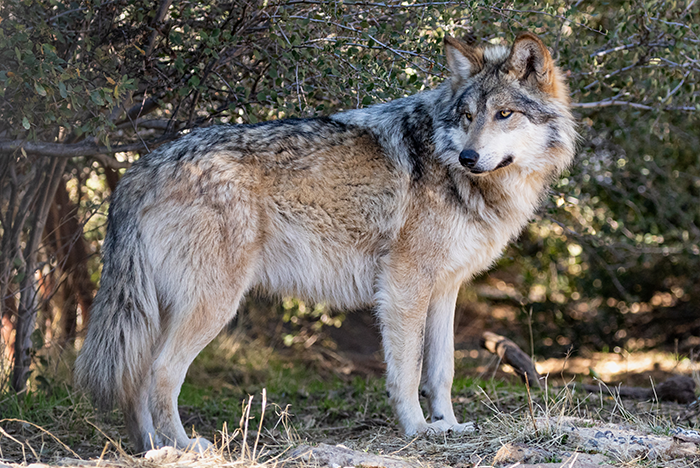
Canis lupus baileyi - Mexican Wolf
Commonly known as the "lobo", this wolf once inhabited Arizona, New Mexico, Texas, and Mexico. The Mexican wolf is the most endangered of the subspecies, and is one of the rarest land mammals on earth. There are currently about 370 wolves in 63 captive facilities around the United States and Mexico. In March 1998, 35 Mexican wolves in six packs were released in Apache National Forest in Arizona. As of the annual count for 2021, there are a minimum of 196 free ranging wolves in the Mexican Wolf Experimental Population Area in Arizona and New Mexico. In 2011, 10 Mexican wolves were released in the Sierra Madre mountains of Mexico. As of 2021, there are about 45 free ranging wolves there.
Canis rufus - Red Wolf
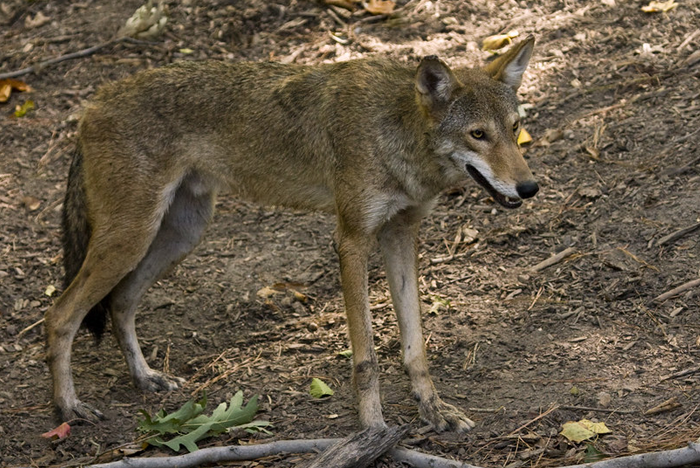
The red wolf was listed in the Endangered Species Act in 1973. By 1980, it was thought to be extinct in the wild. The captive captive breeding program started in 1984 and in 1987, 70-90 Red wolves were released in Alligator River and Pocosin Lakes National Wildlife Refuges. The current population is descended from 14 pure red wolves captured in the wild. There are approximately 245 red wolves in captive breeding facilities, with 17-20 free ranging red wolves in the wild.
Image Credit: "Virginia Red Wolf" by TMWolf is licensed under CC BY 2.0
What are some other species of wolf in the world?
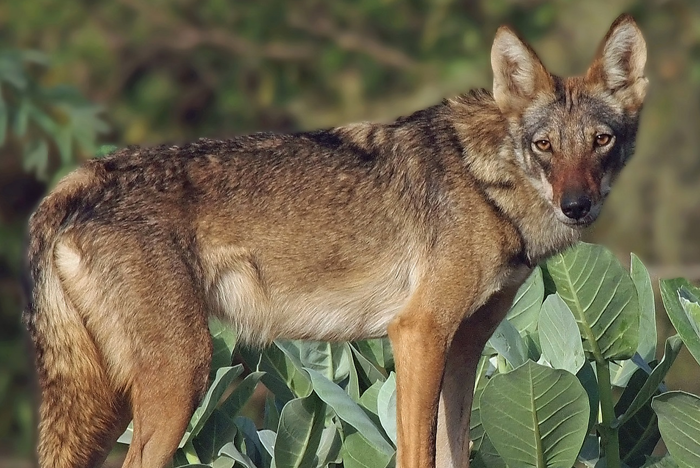
Canis lupus arabs - Arabian Wolf
The Arabian wolf is a subspecies of gray wolf which lives on the Arabian peninsula and is the smallest-sized wolf known. It’s adapted to desert life where food can be scarce, and therefore eats a varied omnivorous diet as well as carrion.
Image Credit: "File:Arabian wolf in Jordan.jpg" by Ahmad Qarmish12 is licensed under CC BY-SA 4.0
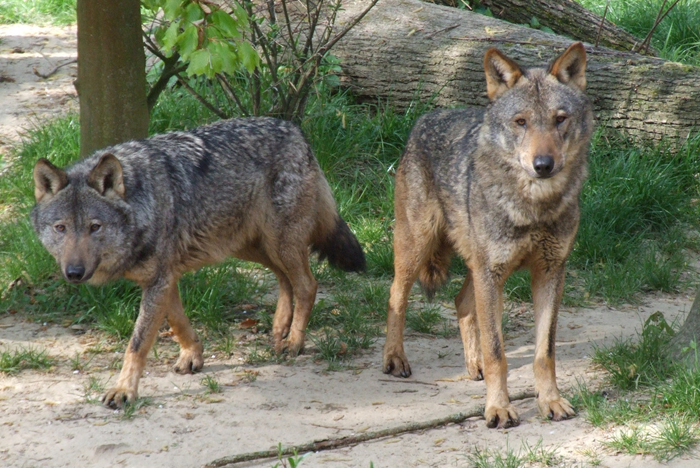
Canis lupus signatus - Iberian Wolf
The Iberian wolf, also known as Spanish wolf, inhabits the northwest of the Iberian Peninsula, which includes Portugal and Spain. Signatus is Latin for “marked”, which describes the Iberian wolf’s signature white markings around their lips and mouth and dark stripes running down their legs.
Image Credit: "File:Canis lupus signatus (Kerkrade Zoo) 20.jpg" by Gérard van Drunen is licensed under CC BY 2.0
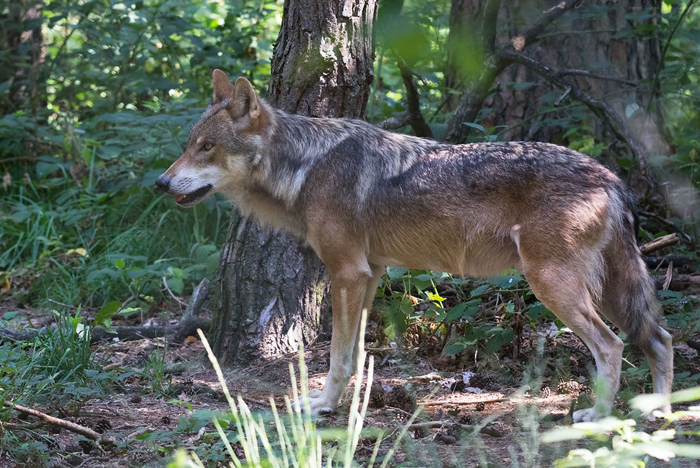
Canis lupus lupus - Eurasian Wolf
Also known as the common wolf, Carpathian wolf, steppe wolf, Tibetan wolf, or Middle Russian forest wolf, the Eurasian wolf is a subspecies of the gray wolf native to Europe and the forest and steppe zones of Asia.
Image Credit: "EurasianWolf" by Cloudtail the Snow Leopard is licensed under is licensed under CC BY-NC-ND 2.0
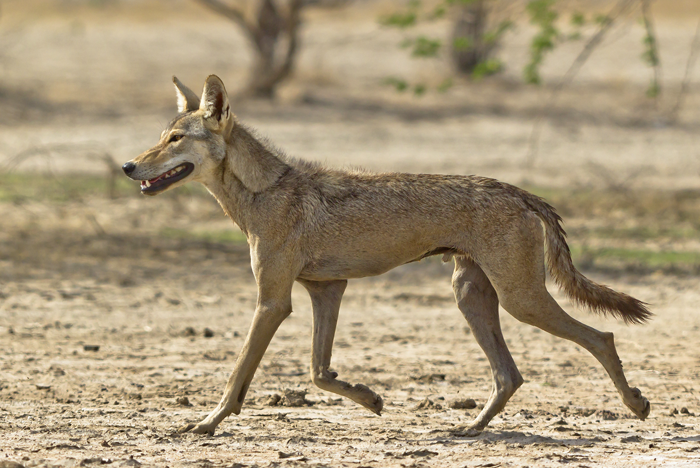
Canis lupus pallipes - Indian Wolf
The Indian wolf is a subspecies of gray wolf that lives in Southwest Asia and the Indian subcontinent. While similar in structure to other gray wolf subspecies, it is smaller with a slighter build with shorter fur and little to no undercoat due to the warmer climate it calls home. In literature, it was Indian wolves that adopted and raised Mowgli in Rudyard Kipling’s The Jungle Book.
Image Credit: "EurasianWolf" by Dhaval Vargiya is licensed under is licensed under Creative Commons Attribution-Share Alike 4.0 International.
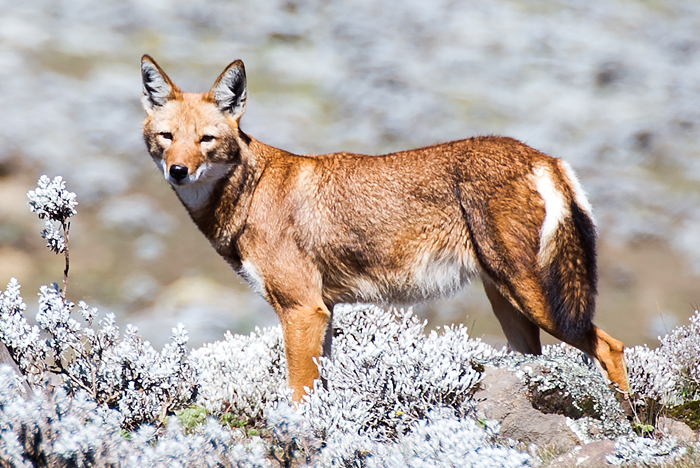
Canis simensis - Ethiopian Wolf
The Ethiopian wolf, also called the Abyssinian Wolf, these wolves live in a social pack setting, but tend to hunt local rodent species alone. They are much smaller than the gray wolf. They are a species found only in the highlands of Ethiopia where there are fewer than 440 wolves.
Image Credit: "File:Etiopisk varg.jpg" by David Castor is marked with CC0 1.0
Are there extinct species of wolf?
Sadly there are quite a number of extinct species and subspecies of wolf. The majority of these extinctions were due to human interference, though the extinction of prehistoric species was due to environmental factors unrelated to man.
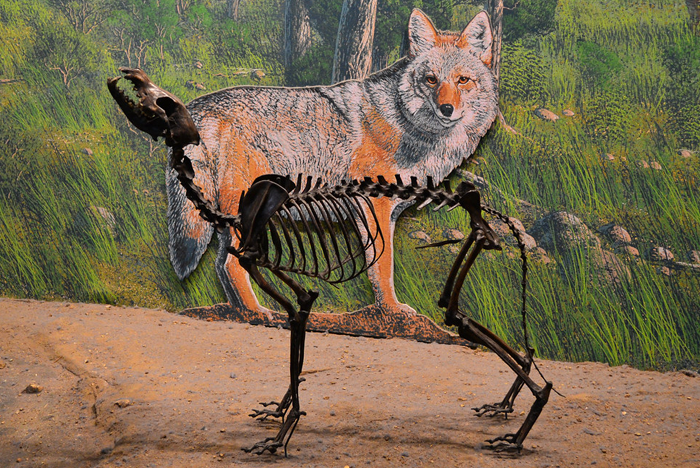
Canis dirus - Dire Wolf
The dire wolf is an extinct species of prehistoric wolf that lived during the late Pleistocene to early Holocene eras, around 125,000 to 9,500 years ago. Dire wolves were exceptionally large compared to modern wolves, weighing in at around 150 pounds.
Extinction of their main prey at the end of the ice age led to increased competition for food between large predators, which contributed to the extinction of the dire wolf. Many sets of dire wolf remains have been found in the La Brea tar pits in Los Angeles, which has allowed us to learn more about this unique species of wolf.
Image Credit: "Dire wolf skeleton" by Ian E. Abbott is licensed under CC BY-NC-SA 2.0
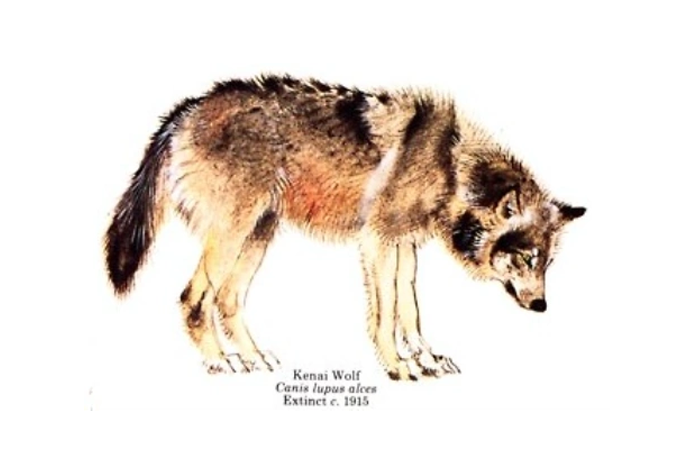
Canis lupus alces - Kenai Peninsula Wolf
The Kenai Peninsula wolf was a subspecies of the gray wolf which lived on the Kenai Peninsula of Southern Alaska. They were common prior to 1915, but were hunted and trapped to extinction within a 10-year period beginning during the Alaska Gold Rush.
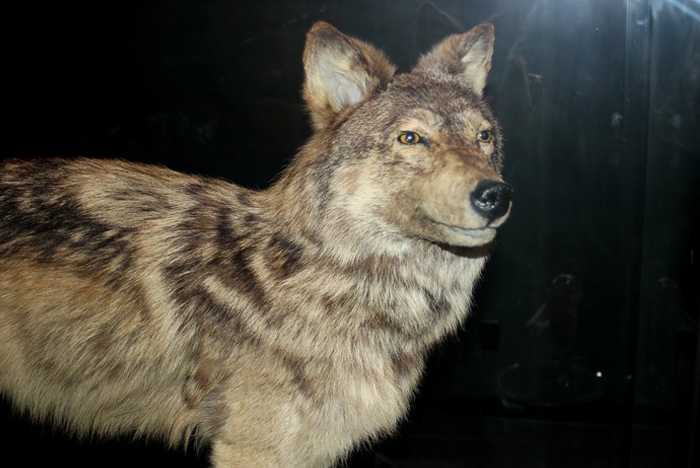
Canis lupus beothucus - Newfoundland Wolf
The Newfoundland Wolf was a medium-sized subspecies of gray wolf native to Newfoundland. The last known individual was killed in 1911, and was officially recognized as a subspecies in 2005.
Image Credit: "IMG_1268" by George Ian Bowles is licensed under CC BY 2.0
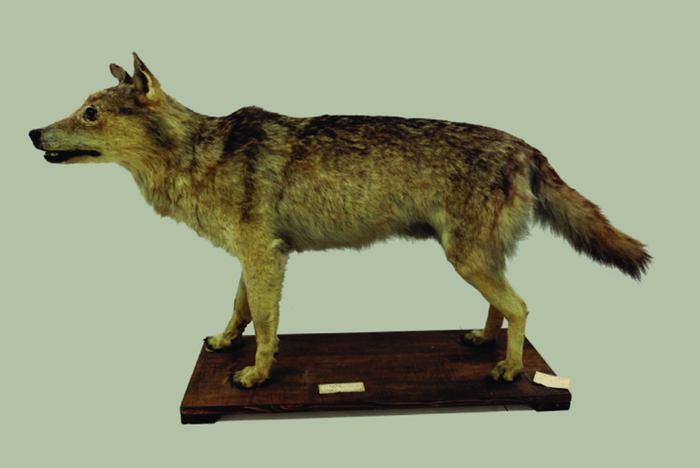
Canis lupus cristaldii - Sicilian Wolf
This subspecies of gray wolf was found only on the Italian island of Sicily. They went extinct in the early 1920s due to human trapping, poisoning, and hunting, but there have been unconfirmed sightings up until the 1970s.
Image Credit: "Figure 5" by Lorenzo Rossi
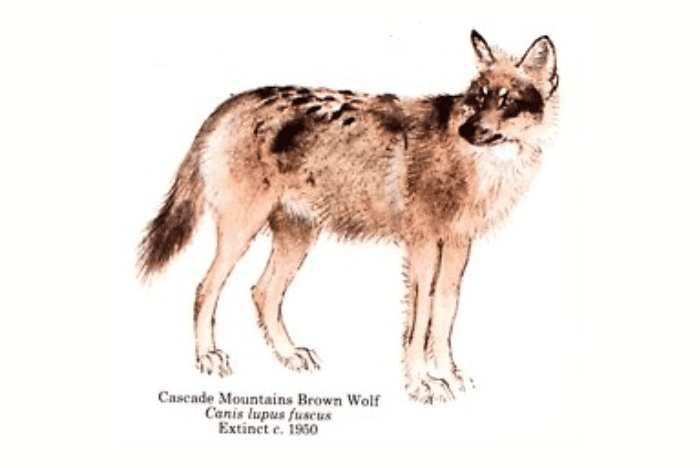
Canis lupus fuscus - Cascade Mountain Wolf
The Cascade Mountain Wolf, also known as the brown wolf, was a subspecies of gray wolf that lived throughout British Columbia, Washington, and Oregon. It was originally thought to be a separate species, but was reclassified as a subspecies in 2005, 65 years after its official extinction in 1940.

Canis lupus floridanus - Florida Black Wolf
Also known as simply the Florida wolf or black wolf, the Florida black wolf was a subspecies of gray wolf that, as the name would suggest, had predominantly darker fur. It went extinct in 1908 due to habitat loss and hunting by humans.
Image Credit: "Florida Black Wolf" by John James Audubon is licensed under Public Domain
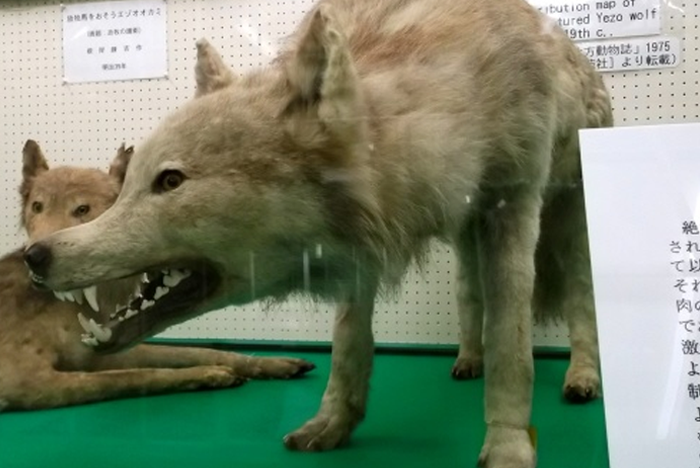
Canis lupus hattai - Hokkaidō Wolf
The Hokkaidō Wolf, also known as the Ezo and Sakhalin Wolf, was a subspecies of gray wolf living in Japan, predominantly on the northern island of Hokkaidō. They went extinct due to hunting by humans to protect livestock during the Meiji Restoration period of the late 1860s.
Image Credit: "Yezo wolf at Hokkaido University" by William Harris is licensed under CC BY-SA 3.0
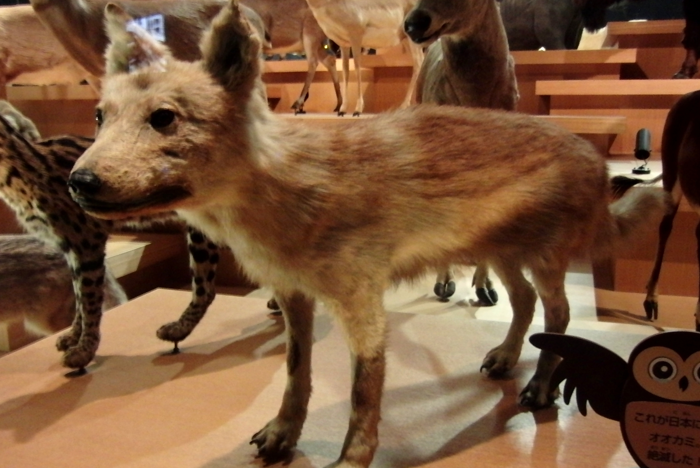
Canis lupus hodophilax - Japanese Wolf
The Japanese wolf, also known as the Honshū wolf, is an extinct subspecies of the gray wolf that once lived throughout the islands of Japan. Habitat loss from deforestation as well as hunting by humans led to their extinction by 1905.
Image Credit: "Japanese Wolf" by Momotarou2012 is licensed under CC BY-SA 3.0
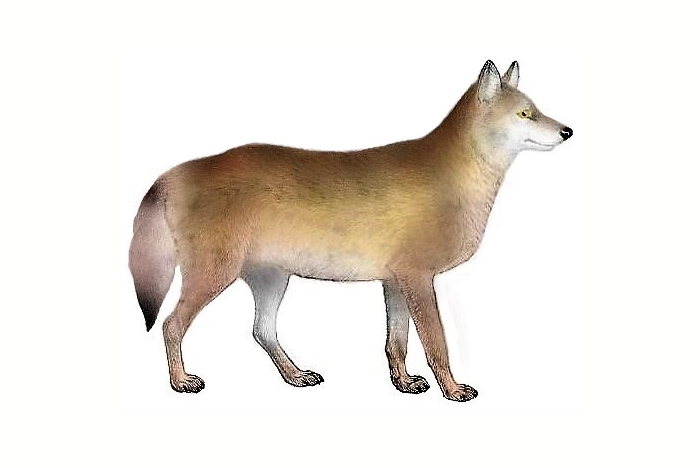
Canis lupus monstrabilis - Texas Wolf
First noted in 1937, the Texas wolf was a subspecies of gray wolf that featured slightly darker, reddish-brown fur than other wolf subspecies in its range of New Mexico and Texas. It was declared extinct just a few years later in 1942.
Image Credit: "Texas wolf illustration, modified from Himalayan wolf from" by Mivart, St. George Jackson is licensed under Public Domain
How many wolves are there in a pack?
Wolf pack size can range from 2 to 10 wolves, with the average pack size consisting of 6 wolves. A pack usually consists of a breeding pair, their current offspring, and a few yearlings. There also may be a few related and/or unrelated adult wolves in the pack.
Wolves will usually stay with the pack until they are 2-3 years of age. At that time, they may choose to disperse to join a different pack or to start a new pack of their own. Pack sizes depend on the available prey and territory. Wolf packs in Alaska and Canada are usually larger than in the lower 48 states, which is mostly due to the abundance of prey and larger available range.
How many teeth do wolves have?
Wolves have 42 teeth. There are 20 teeth in the upper jaw (six incisors, two canines, eight premolars, and four molars), and 22 teeth in the lower jaw (six incisors, two canines, eight premolars, and six molars).
How much does the average wolf weigh?
Northwestern gray wolves range from 70 to 120 pounds, with female wolves weighing slightly less than males. Wolves in the northern United States tend to be larger, some reaching 130 pounds or more. Mexican gray wolves range from 60 to 90 pounds.
How fast do wolves run and how far can they travel?
Wolves trot at 5 miles per hour, but they can run in short bursts at up to 35 miles per hour. They can travel as much as 30 miles per day while hunting for food.
What are the similarities and differences between wolves and coyotes?
Wolves and coyotes can look similar, but they are different animals and fill their own unique niches within an ecosystem. Here’s a side-by-side comparison of the difference between wolves and coyotes. Can you spot any similarities?
| Gray Wolf | Coyote | |
|---|---|---|
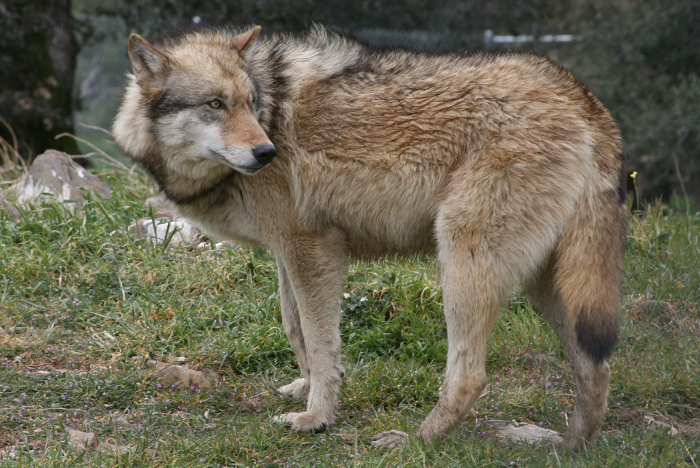 |
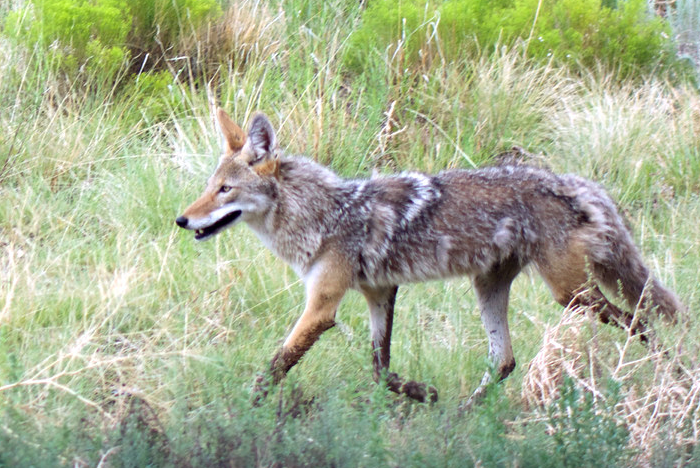 |
|
| Length | 4.5 - 6.5 feet (nose to tail) | 3.6 - 4.4 feet (nose to tail) |
| Shoulder Height | 28 to 36 inches |
21 to 24 inches |
| Track Size | 4 - 5 long x 3 3/4 - 5 wide |
2 1/4 - 2 3/4 long x 1 3/4 - 2 3/8 wide |
| Weight | 60 - 150 pounds | 20 - 50 pounds |
| Coat | Grizzled gray is the most common, but they range in color, including black, white, gray, and shades of brown. | Gray or reddish brown with rusty legs, feet and ears with a whitish belly and throat. |
| Muzzle | Large and squared | Smaller and pointed |
| Ears | Rounded, relatively short | Pointed, relatively long |
| Diet | Varies by subspecies and region. Elk, deer, caribou, moose, bison and beaver are common for Northwestern gray wolves, while Mexican grays can hunt elk, deer and javelina. | Rabbits, rodents, deer, elk, carrion |
| Locomotion | Wolves trot at 5 miles per hour, but they can run in short bursts at up to 35 mph. | Coyotes can run up to 25-30 mph. |
| Habitat | Varies by subspecies. Can include forest, tundra and desert. Presently limited to areas of extensive wilderness. Wolves do not do well near human settlements. | They can be found in any variety of habitats including forests, deserts, prairies, mountains, agricultural areas, and urban areas. They are most common in mixed habitats, and have adapted well to living in urban environments. |
| Range | Gray wolves once ranged over almost all of North America north of Mexico City. Extirpation of wolf populations began after European settlement. In the United States the range, population, and legal status of wolves varies by state and region. | Coyotes occupy Alaska, much of mainland Canada, throughout the U.S., and south through Mexico to western Panama. Not found in Hawaii. |
Where are wolves found?
Wolves are found in the Northern Hemisphere and typically prefer high elevation forests and plains, though they can be found in most types of habitats. Wolves can inhabit areas with enough prey (deer, elk, bison, moose) and a low population density of humans.
Are there wolves in California?
Yes! In 2011, a wolf tagged as OR-7 traveled over 1,000 miles and made his way into California from Oregon as a lone wolf looking for a mate. When he stepped foot into California, he was the first wolf in the wild in our state since 1924. OR-7, nicknamed “Journey”, traveled back into Oregon, found a mate, and started his pack. He and his mate had five litters between 2014 and 2018. Journey and his mate paved the way for a population of wild wolves in California.
As of 2021, there are 3 known packs of wolves in Northern California: the Lassen, Beckwourth and Whaleback packs. There are about 20 total individuals between these three packs.
How many wolves are left in the United States?
Though wolves are endangered throughout the majority of the country, their populations and their conservation status vary by state. For an updated overview of these populations based on annual wolf counts, visit our Wolves in the USA page.
Are all gray wolves gray in color?
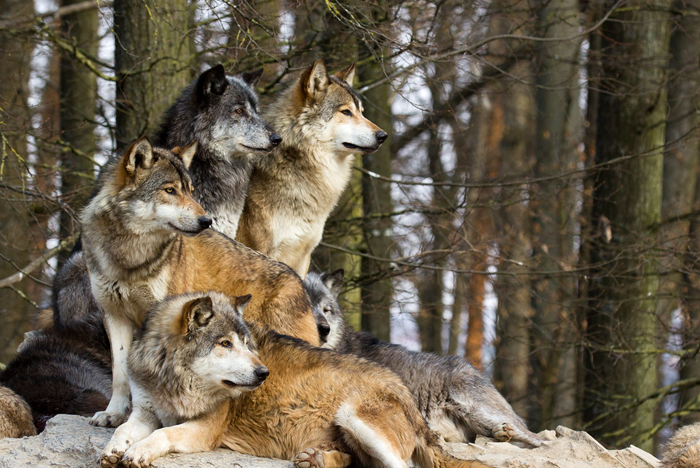
No, the term gray wolf is a species name. Gray wolves come in many colors, including white, black, tan, brown, or grizzled, which is a combination of tans, browns, and black. The name “gray” refers to the color of their undercoat that they shed before summertime.
Image Credit: "Wölfe" by Cloudtail the Snow Leopard is licensed under CC BY-NC-ND 2.0
How long do wolves live?
The average lifespan of a wolf is 5-7 years in the wild and 12-15 years in captivity.
What are the leading causes of death for wolves?
In areas with people, human activity is a major cause of wolf mortality. Starvation and injuries from territorial aggression can also cause deaths. Canine parvo, distemper, and mange are also responsible for some mortality.
How strong is a wolf’s bite?
Wolves have incredibly strong jaws, and can bite though bones to eat bone marrow. Scientists have measured the bite force of captive gray wolves at around 400 psi.
How many pups do wolves have and how long is their gestation period?
The gestation period for wolves is approximately 63 days, with most wolves giving birth between late March and early June. The average wolf litter consists of 4-5 pups, but can range from 1-10. These numbers can vary depending on the abundance of prey, wolf population density, and the size of available territory.
How much do wolf pups weigh when they are born?
Newborn wolf pups weigh about 1 pound when they are born and are brown in color. They don’t get their final adult coloration until much later.
What do wolves eat?
Wolves mostly prey on caribou, elk, white tail deer, moose, and bison, though wolves can eat fish and carrion as well. Captive wolves, such as those at California Wolf Center, eat a carefully balanced mix of fresh meat, fish, specially formulated kibble, nutritious soft food, and enrichment treats designed to maintain a varied and healthy diet.
What is the social structure of a wolf pack?
A wolf pack is usually made up of a breeding pair and their offspring. The breeding pair is typically a male and female who work together to ensure pack survival, and are dominant because of their status as parents. Once the pups reach sexual maturity between 1 and 3 years of age, they will generally disperse and create their own packs.
The idea of an “alpha” wolf is an outdated term that does not accurately describe how wolves interact with each other. Although wolves can have a social hierarchy of dominance, the dominant wolves usually achieve that status through mating and having pups, not through fights or competition. Dominance is not gender-specific, either. Both males and females can be dominant.
Why do wolves howl?
Wolves howl to communicate with one another, whether it’s to locate pack members, defend territory, or find a mate. On a flat landscape, a wolf’s howl can be heard up to 9 miles away.
How do wolves communicate?
In addition to howling, wolves communicate in a variety of other ways. They make vocalizations such as growling, whimpering, whining, as well as a "huff-bark". They also use facial expressions, eye contact, body posture, and even scent marking to communicate.
Do wolves howl at the moon?
It’s a common myth that wolves howl at the moon, or that the moon has anything to do with wolf communication. While wolves can and do howl at night, it is not directed at the moon and is to communicate with other wolves.
Why do some wolves have numbers instead of names?
Wolves that are part of an active reintroduction program (like Mexican gray wolves) are referred to by their studbook number to avoid confusion within the program, as multiple wolves might have the same name. The letter denotes the sex of the animal (M=male, F=female) and the number corresponds to the order in which the wolf was entered into the program through birth in a breeding facility or discovery in the wild. For example, if the series of numbers is 1781, then that wolf is the 1,781st wolf entered into the program.
Wolves are entered into the program by being born in a captive breeding facility or counted and/or collared in the wild population.
Are wolves dangerous to humans?
Generally speaking, no. While wolves are large predators, they generally avoid humans as much as possible. The majority of conflict between wolves and humans in North America exists because of livestock predation and general public fear and misinformation rather than actual instances of wolf attacks. There are many efforts between conservationists and ranchers to form a coexistence between wolves, cattle and the people who share the landscape with them. To find more information about the Working Circle Proactive Stewardship, visit their website: http://www.workingcircle.org/
That said, wolves are wild animals and should not be approached. It is up to humans to take all necessary precautions and avoid encouraging potentially dangerous behavior and situations involving wolves and people.
Are wolves endangered?
Some species and subspecies are more endangered than others. Certain wolf populations are federally protected, while others are managed by the state and/or tribal agencies. For example, as of 2022, red wolves and Mexican gray wolves are listed as federally endangered. However, some gray wolf populations in Washington, Oregon, Wyoming, Montana, and Idaho are managed by the state government. For more information on the conservation status of wolves in the United States, visit our Wolves in the USA page.

